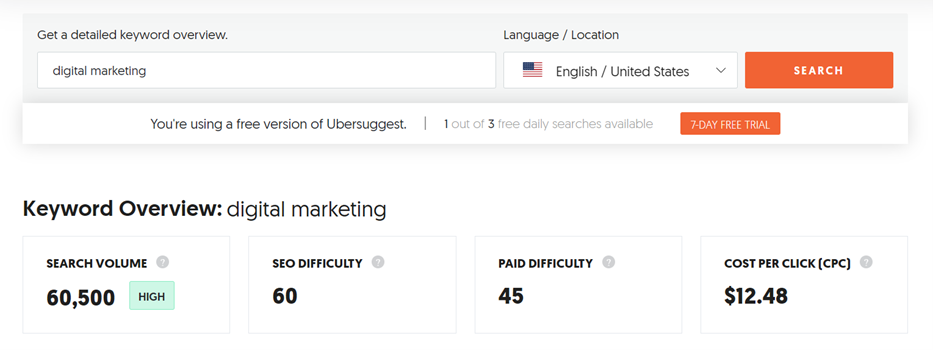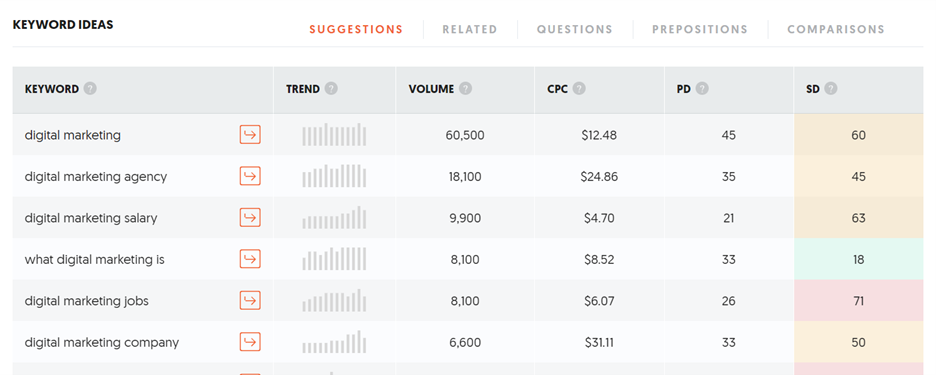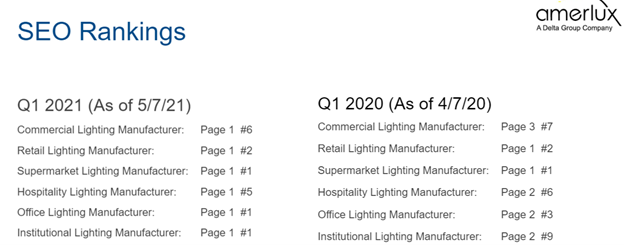Google’s algorithm is getting smarter, which means your content marketing strategy needs to keep pace.
Since 2011, Google has devalued tricks like keyword stuffing, also referred to as keyword density. But things have been racketed up another notch.
Toward the end of 2019, the world’s top search engine launched Bidirectional Encoder Representations from Transformers (BERT). In short, it means searches have become more relevant because they are more focused on the intent behind the keywords, not just the actual keyword.
From a digital marketing perspective, it means your website pages need to load faster and your links need to be more useful. From a content marketing perspective, your content needs to be well written, positioning your brand as the solution to your prospects’ specific problems.
Now what? Content marketing, embedded with search-engine optimization (SEO) is the answer. Every time Google upgrades its algorithm, you will need to adapt your content strategy so the two align. The proof is overwhelming.
Consider research from the Content Marketing Institute:
- Content marketing costs 62% less than outbound marketing and generates 3x as many leads.
- Content marketing has lower up-front costs and deeper long-term benefits than paid search.
- Small businesses with blogs generate 126% more leads than those without blogs.
- Content marketing rakes in conversion rates 6x higher than other methods.
There is a good reason why businesses continue to invest more into content marketing.
Here are three ways to supercharge it with SEO:
Content SEO Strategy Tip #1: Become a ‘Storyseller’
A brand is a story that makes a promise, meaning it sets expectations. Every time I interact with your brand, I know that I can expect X, Y and Z. Every interaction creates an experience and, ultimately, that becomes your brand.
Storytelling is a great way to connect with your prospects, creating helpful and rewarding experiences along the way. Storytelling also helps your prospect retain and recall your company.
But it’s simply not good enough from an ROI perspective, especially as search engines become more demanding in the hopes of creating better outcomes from their respective search boxes.
Instead, you need to become a skillful “storyseller”, crafting content in a way that compels action like engagement, commitment and sales.
Think about your next piece of content as a strategic delivery system, packaging keywords that attracts the right prospects along with links that take your prospects to the right, higher-valued webpages on your site. From a marketing strategy perspective, that’s your end game. The rest is sales.
When CMA added original content to tell Vein Specialist Centers’ story, the medical practice’s website numbers improved. Organic traffic increased to 6,100 users a month from 5,000 users during a four-month period.
Content SEO Strategy Tip #2: Leverage Actionable Data
Digital marketing is a two-way street. In other words, every time you serve up content to the world, the world gives you data. That’s really important because that data tells you what you should do next…sometimes it’s more of the same, sometimes it’s less.
To me, the “digital” part of digital marketing means analytics. This type of insight will save you time and money. But don’t wait until you publish content before you start using the numbers. There are tools that allow you to get a head start during the brainstorming part of your content program.
Here’s a quick, easy example. Let’s say CMA wants to rank higher for “digital marketing” in search engine results. So, go to a free tool like Ubersuggest. (Yes, there are other similar tools like SEMRush, Ahrefs, Moz Pro and SpyFu to name a few.)
Once you’re on the homepage of Ubersuggest, type in your keyword, “digital marketing.”

You can quickly see the term is in high demand, a little rich in terms of cost-per-click and challenging to place in organic and paid arenas.
Guess what? That’s perfect. That means our efforts should create a worthy opportunity.
Scroll down the same page. Look for weekly search volume greater than 2,000 and SEO difficulty less than 40.
And there it is: “What Digital Marketing Is” in plain sight.

The search phrase “what digital marketing is” could be the title of your next frequently-asked-question on your website. It could be the headline for your next blog post.
Do you see how using data positions your brand for continuous improvement? When it comes to content marketing strategies, it’s about getting better every day with the help of SEO.
For Village Development, a division of Garden Communities, which is a real estate development firm, leveraging marketplace data led to a 15% increase in organic traffic during a four-month period. More importantly, CMA’s in-house SEO team was able to expand its total keywords in which its website could be found. The keywords driving traffic increased 16% with 184 keyword position changes.
Content SEO Strategy Tip #3: Diversify Content Formats
Although Google’s algorithms get pickier, they do reward brands for well-researched, well-written articles that are regularly updated on your site. Organizations are spending more these days on content marketing strategy to ensure they get a bigger bang for their buck.
“Owned media” is the perfect set up for SEO. The more content you have, the more opportunities it creates for SEO.
To create the biggest impact, however, you must diversify in terms of writing, formatting and presentation.
For example, make sure your content is error-free and cohesive. Write in shorter paragraphs to make it easier for the web crawlers and algorithms to “read” it. Use different lengths with your sentences.
Looking for a quick hack to encourage your readers to increase their time duration on your webpages? Add subheads. Use bullet points. Package the content with visuals, such as photos, videos and infographics.
When it comes for formats, follow the script and mix it up. Give your readers an in-depth, thought leadership piece to showcase your knowledge. Then, provide them with a listicle, a story that provides a checklist of items that will help them do something valuable like, “22 Ways To Repurpose Content for Social Media” or “5 Ways Digital Marketing Closes Leads.”
If you have something newsworthy, how about a press release that demonstrates your brand’s authority? And don’t forget case studies and FAQs, which deliver results.
For a LED lighting manufacturer in New Jersey, CMA’s content SEO goal was to rank Amerlux.com on Page 1 of Google’s search engine results pages (SERPS) for main keywords associated with Amerlux’s brand. Aligning your brand goals with your content strategy will increase SERPs and organic traffic. CMA developed original content that covered products and new technologies in various formats, including case studies, blogs, guides and press releases that focused on Google SEO with a local SEO perspective. This form of SEO optimization increases a website’s rank.

When it comes to SEO, content is still king. To remain on top, you will need to create a custom digital marketing strategy and continually revise the on-page SEO to ensure it is delivering what the latest Google algorithm wants.
Do you want to learn more ways content marketing can help drive SEO results? Contact us today, to start the conversation.